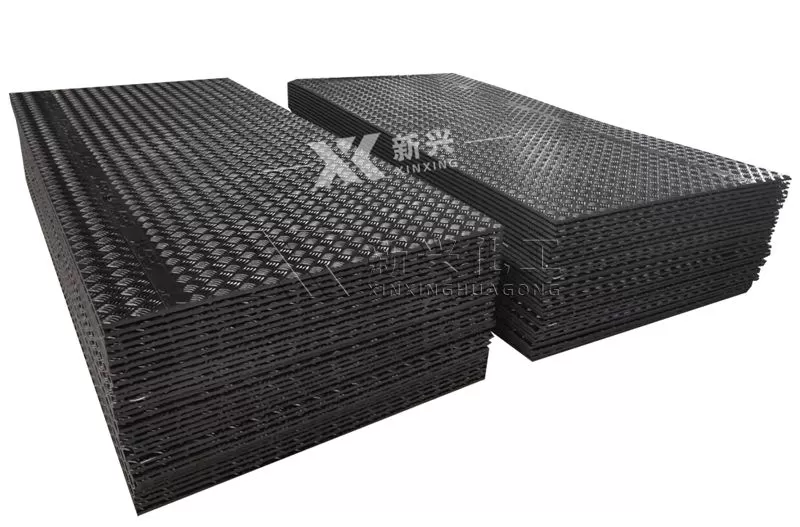Ground protection mats play a vital role in safeguarding surfaces during construction work, outdoor events, and heavy machinery operations. By distributing weight evenly, they help prevent ruts, soil compaction, and erosion in sensitive areas. Although built for durability, these mats can wear out faster if not used or maintained properly, which may lead to higher replacement costs.
Prolonging the life of ground protection mats not only helps reduce long-term expenses but also lowers environmental impact by decreasing waste. Proper cleaning, handling, and storage are essential to ensure reliable performance and maximize return on investment.

Step 1: Clean Mats Regularly
Consistent cleaning is the first step in extending mat longevity. After every use, remove mud, dirt, and debris with a hose or pressure washer. For stubborn stains, apply mild detergent with a soft brush. Avoid strong chemicals, as they can damage the material and reduce durability. Keeping mats clean prevents buildup that can lead to surface wear or cracking over time.
Step 2: Store Mats Correctly
Proper storage helps prevent warping and unnecessary deterioration. Always store mats flat on a solid surface, or stack them vertically with adequate support to avoid bending. Keep them in a shaded, cool, and dry environment to minimize UV damage and moisture exposure. Covering stored mats with a tarp adds an extra layer of protection against dust and weather conditions.
Step 3: Inspect and Repair as Needed
Regular inspections are key to maintaining long-lasting mats. After use, check for cracks, bends, or worn-out areas. Address minor issues immediately using repair kits or patching solutions to stop small problems from becoming larger. Early repair ensures mats continue performing well under heavy loads and extends their service life.
Step 4: Follow Weight Capacity Guidelines
Every mat comes with a recommended weight capacity, and respecting these limits is essential for safety and longevity. Before placing machinery or vehicles, confirm the mat’s load rating and distribute weight evenly. Using additional mats when needed prevents overloading, which can cause cracks or permanent damage. Staying within weight limits guarantees both durability and site safety.
Step 5: Use Accessories for Extra Protection
Adding accessories can significantly improve mat performance. Edge protectors prevent wear on corners, while connectors keep mats securely in place under moving equipment. In areas with heavy traffic, using an underlayment provides extra cushioning, reducing the risk of cracking and helping mats last longer.
How often should mats be cleaned?
Clean after every use, especially when exposed to mud, oil, or chemicals. Regular cleaning prevents buildup that can reduce traction and cause damage. A pressure washer with mild soap is recommended.
Can damaged mats be repaired?
Yes. Minor cracks or holes can often be fixed with polyethylene repair kits. For more severe damage, consult with a professional repair service. Quick action prevents further deterioration and maintains load-bearing strength.
What is the average lifespan of these mats?
High-quality mats can last 10 years or more when properly cared for. Factors such as load size, frequency of use, and environmental exposure influence longevity. Routine inspections and correct storage greatly extend service life.
Do mats work in all weather conditions?
Most mats are weather-resistant and can withstand rain, snow, and extreme temperatures. To reduce UV degradation, store them away from direct sunlight when not in use. Non-slip designs also improve safety in wet or icy conditions.
How can warping be avoided?
Store mats flat on a hard, level surface, and avoid stacking them too high without proper support. Excessive heat or poor storage practices are the main causes of warping, so keeping mats in shaded, cool areas is ideal.
When should mats be replaced?
If mats show deep cracks, severe warping, or significant loss of traction, it’s time for replacement. Mats that no longer provide stable ground support pose safety risks and should be swapped out promptly.
Established in 1989,located in Qingdao city of Shandong province, Shandong Ningjin Xinxing Chemical Co.,LTD. is the most professional manufacture of engineering plastics and the only manufacturer who has complete MATS system in China.
Phone
+86 189 0640 6469
Location
Liaohe Road, Ningjin Industrial Zone, Dezhou City, Shandong Province, China.
Copyright © Shandong Ningjin Xinxing Chemical Co., Ltd. All Rights Reserved |
Sitemap
| Powered by 